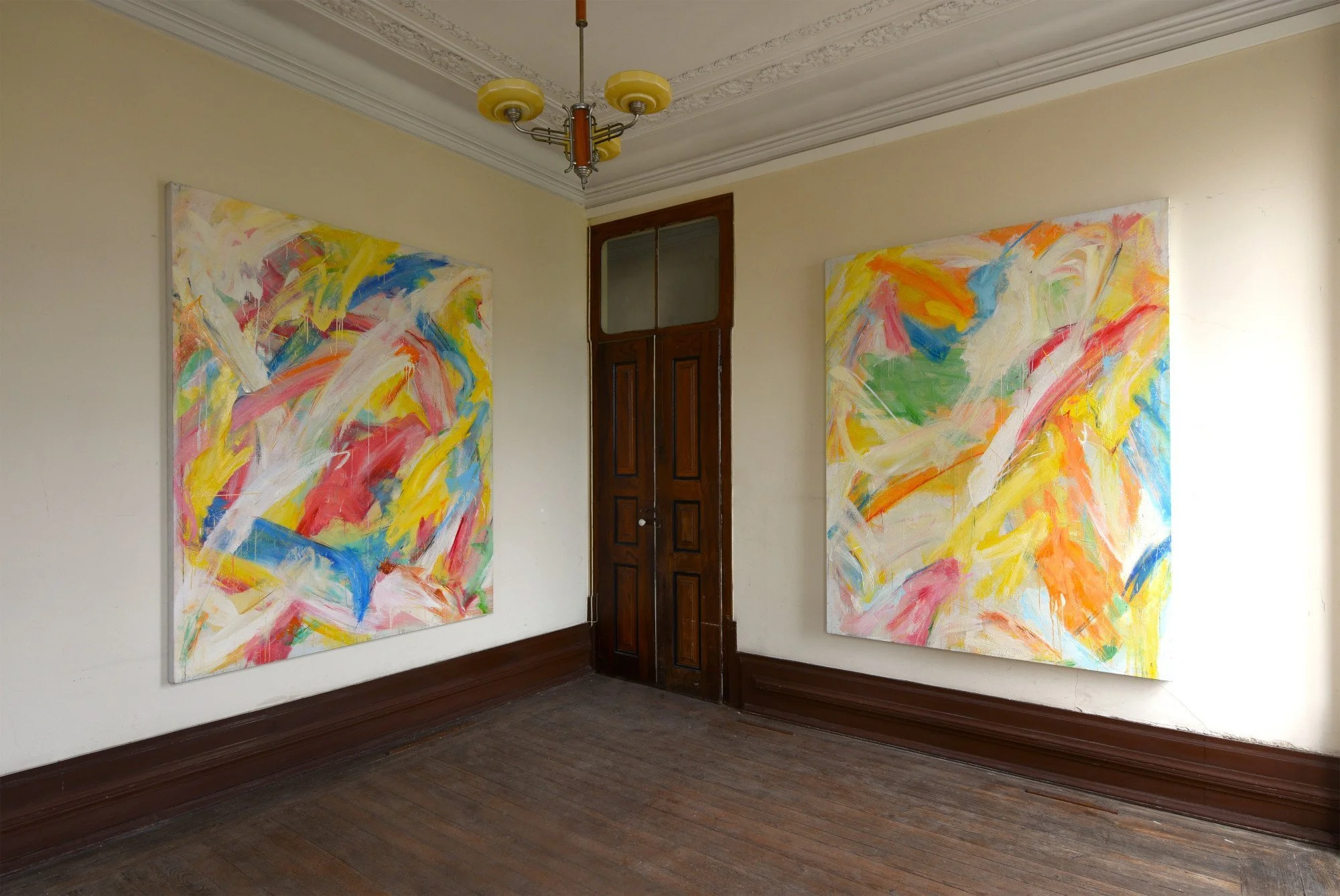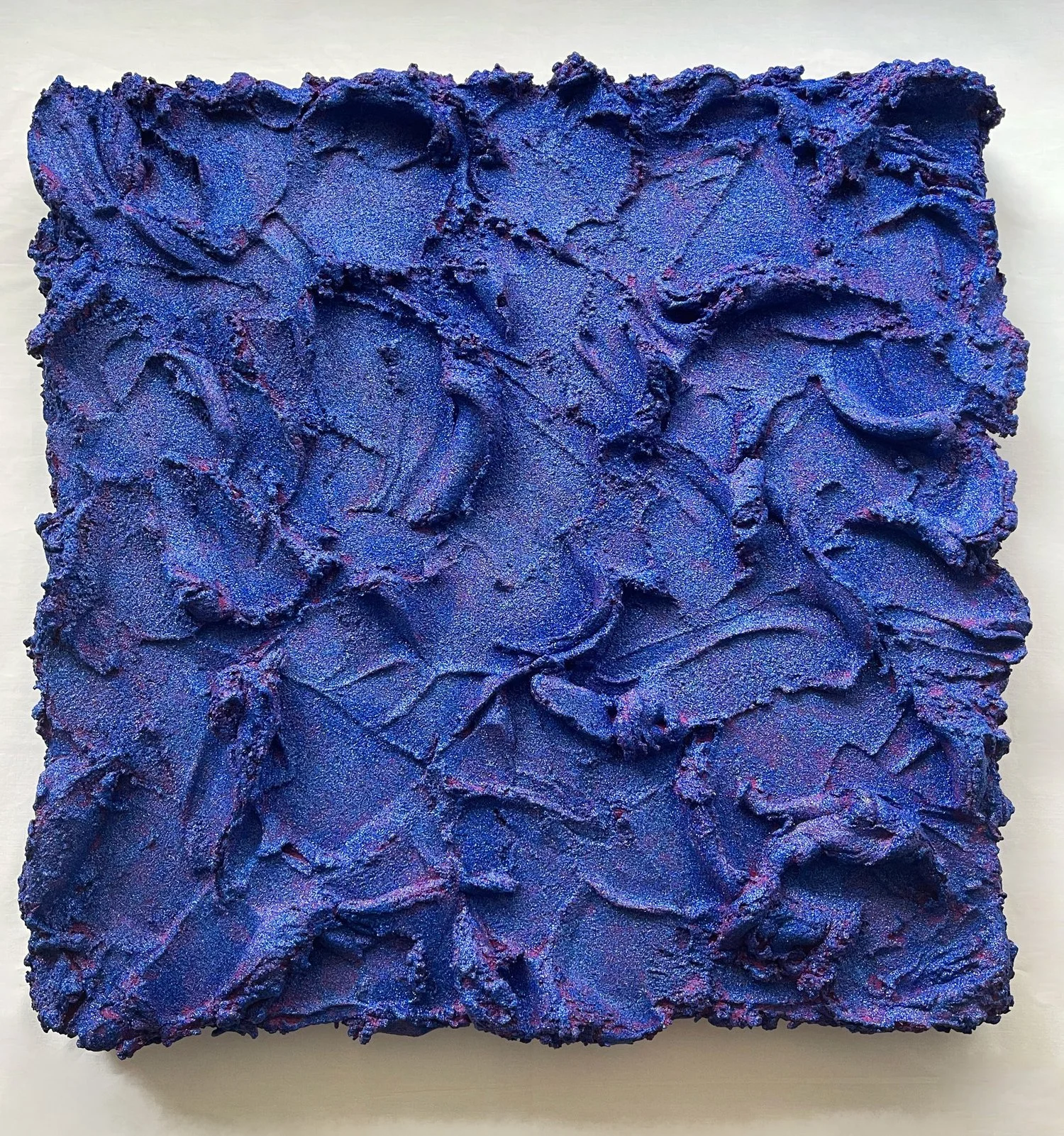9 Questions with Rita Hisar
Rita Hisar (Toronto, Canada) has always expressed herself through art. Her earliest recollection is drawing a portrait on a piece of wood (she grew up on a farm) at the age of four. There was always Beauty all around her-trees, animals, flowers, faces, and pretty objects wanted to internalize all of this Beauty by reproducing it. Rita had a lot of time to admire nature and reflect on it when she was very young. Rita saw seasons come and go and how fleeting Beauty was- she wanted to capture it before it disappeared. Rita Hisar is also inspired by the bold colors of the Caribbean, the raw honesty of graffiti art, and the passion of Pop Culture Icons in music, film, fashion, and sports. Rita Hisar never thought being an Artist was a real option for her, so she studied political science and law, became a refugee law lawyer for many years, and then taught. Although she is largely self-taught, Rita has studied at the Ontario College of Art and Design and the Toronto School of Art. A few years ago, she became serious about her art, and she has had shows in New York, London, Miami, Turks and Caicos, and Toronto. She is now represented by Mahlstedt Gallery in New York and Art Provo Gallery in Turks and Caicos.
Rita Hisar, Welcome to Al-Tiba9. In your youth, when did you realize that you were going to become an artist?
As a child, I did not think being a Professional Artist was a realistic option for me. I did not know anyone who worked as an Artist, I had no role models who were Artists, and I lived on a farm in rural Ontario, Canada, far from the art world. Nevertheless, I have always had an urge to create, and I have been drawing ever since I could hold a pencil in my hand.
Later in high school, I won the Art Graduate Award, and my art teacher strongly encouraged me to study Art in College. I loved art, but I was also very curious, and I wanted to learn many subjects. Inspired by my father's life as a refugee who came to Canada after fleeing former Czechoslovakia, I decided to study political science and law. I worked as a lawyer helping other refugees for many years. It was gratifying, but I felt like something was missing. I loved languages, so I decided to get a French and Education degree to become a teacher. Again, I felt like something was missing. Throughout my life, however, I continued to paint and carry a sketchbook everywhere I went. Nothing made me happier.
Finally, I decided to pursue my real passion-"art," and I enrolled in the Ontario College of Art and Design University (OCADU) in Toronto. Although I am mostly self-taught, my OCADU experience gave me the confidence to begin working as an artist professionally. I was soon blessed to have shown in London, Miami, Toronto, and New York. It has been a long journey to become a Professional Artist, but I am sure I am a better Artist because of all the experiences I have been through to get here.
How would you define yourself as an artist?
I am a Contemporary Expressionist Artist, influenced by the Pop Art/Urban Art style.
Chanel Nº5, Photo Rita Hisar©
What is your intention behind your paintings? And how do you get ideas for each piece of art?
I am interested in exploring "Beauty"; in its different forms on canvas - through color, texture, and line. I take the ordinary - an ice cream cone or a watermelon – or something more complex like the human face or form- and I make it come alive with bright, bold colors, strong line, and life-like texture. For example, I just completed a series of semi-abstract paintings entitled "A Splash of Color" with the idea of having the viewer look at the simple Beauty of fruit up close. We see an orange every day –but do we see the color? The lines? The texture?
My motto in art –and life –is "Live in Color" with the bright, bold colors I use being a metaphor for courage, strength, and Beauty. I think we all want to live like that, but sometimes we become afraid. Art can inspire us to live better. My subject matter is inspired by my travels, nature, and pop culture, including icons in film, music, sports, and politics.
I See It… Photo Rita Hisar©
I like It… Photo Rita Hisar©
I Want It... Photo Rita Hisar©
I Got It… Photo Rita Hisar©
Why are you so passionate about Beauty and nature?
I think I learned at a very young age that Beauty is very fragile and fleeting. Living on a farm, I was surrounded by nature, and I watched nature change as the seasons changed: rose petals fell, the snow melted, animals were born and then died – I wanted to capture their Beauty before it disappeared. The only way I could capture it was with my pencil or paintbrush. Nature entranced me as a child, as it also reminded me of God and that I was not alone.
What is your creative process like?
I always begin by making a realistic drawing of my subject – finding its "truth" or "essence"; I then play with color, line, and texture using a palette knife and acrylic paint to create a unique painting that seems to come alive with color. It is a spontaneous, improvisational process whereby I paint layers upon layers of bright colors to capture my subject's complexity. I like to paint using a palette knife to create texture in the painting. I also want the viewer to examine the subject closely, looking at the Beauty of the details, so I will enlarge it or crop it, like a photograph.
What artists inspire you?
Henri Matisse, Picasso, Andy Warhol, and Georgia O'Keeffe. All of them were innovators and courageous artists.
Do not lick, Photo Rita Hisar©
What role does the artist have in society?
I think the artist's role in society is to show the world a different way of looking at things to share a unique perspective. I believe an artist never stops being an artist-even when he/she is not creating. It is rather the way the artist sees the world –that makes him/her an artist.
Artists do not have all of the answers, and maybe our role should be to raise questions and inspire–rather than change society. We can encourage the viewer to see something that they could not have seen on their own. It may be as simple as the Beauty of lemon or as complex as the question of one's identity.
Could you tell our readers what you think about the art community and market?
Today I think online art communities play a very important role for most artists. Ello is a good platform for Artists. Although not an artist's social media platform per se, I think Instagram is still a great way to learn and be inspired by other artists. It is an opportunity to gain exposure, encourage other artists, and get feedback on your art from your peers and a wider audience. I think, however, "in-person" art communities are also important. I belong to an artist collective, ArtTour Collective, in Toronto, and we meet monthly to exchange ideas and plan shows.
The Global Art Market has been hit very hard by the financial crisis caused by COVID, but I think there will be a recovery in the not so distant future. Art Fairs and art galleries, in particular, have suffered, but they are a vital part of the art world: to experience art, you do not just see it. It would be best if you felt it- and that isn't easy to do online.
Basqiat, Photo Rita Hisar©
What do you hope that the public takes away from your work?
There is a lot of despair and suffering in the world right now, and I think art can inspire people to rise above it. It can be a positive force that moves people to look for the good and the Beauty in their everyday lives and, ultimately, to have the courage to become a better person. I hope the public can see the Beauty of what I am capturing on canvas and walk away from it feeling better.


























